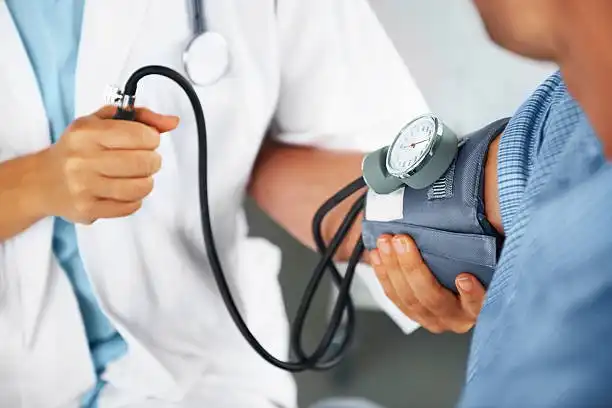Discovering a lump on your back can be a cause for concern. While many lumps on the back are benign and harmless, there is always the possibility that it could be something more serious. It is important to pay attention to any changes in your body and seek medical attention if you notice a lump on your back.
There are various potential causes for a lump on your back. One common cause is a lipoma, which is a noncancerous growth of fat cells. Lipomas are generally soft and movable under the skin. Another possible cause is a sebaceous cyst, which is a closed sac filled with pus. These cysts can be painful and may require drainage or removal. In some cases, a lump on the back can be a symptom of an infection or an abscess.
It is important to have any lump on your back evaluated by a healthcare professional. They will be able to perform a physical examination and may order additional tests, such as imaging studies or a biopsy, to determine the cause of the lump. Early detection and diagnosis can help guide appropriate treatment and ensure the best possible outcome. Remember, it is always better to be safe than sorry when it comes to your health.
What is a Lump on the Back?
A lump on the back refers to an abnormal growth or swelling that appears on the back of a person’s body. It can range in size and texture, appearing as a small, firm bump or a larger, soft mass. The lump may be visible just under the skin or deep within the tissues, and can be accompanied by various symptoms such as pain, tenderness, redness, or itching.
The causes of a lump on the back can vary and may include a cyst, lipoma, abscess, or a tumor. A cyst is a sac-like structure filled with fluid or semisolid material, while a lipoma is a benign tumor composed of fat tissue. An abscess, on the other hand, is a collection of pus caused by a bacterial infection. A tumor can be either benign or malignant, with the latter being cancerous.
In order to properly diagnose a lump on the back, a healthcare professional may perform a physical examination and conduct certain tests such as imaging studies or a biopsy. Treatment options depend on the underlying cause of the lump and may include medication, drainage, or surgical removal. It is important to seek medical attention if a lump on the back is painful, rapidly growing, or causing other concerning symptoms.
- If the lump is caused by an infection, antibiotics may be prescribed to clear the infection and reduce swelling.
- A cyst or lipoma may be removed through a minor surgical procedure.
- If a tumor is suspected, further testing may be required to determine if it is benign or malignant. Treatment options for a malignant tumor may include surgery, radiation therapy, or chemotherapy.
Overall, a lump on the back should not be ignored and proper medical evaluation is essential to determine the cause and appropriate treatment. Early detection and prompt intervention can help prevent potential complications and ensure the best possible outcome. It is always recommended to consult with a healthcare professional for an accurate diagnosis and personalized treatment plan.
Causes of a Lump on the Back
A lump on the back can have various causes and may indicate an underlying health condition. It is important to identify the cause of the lump to determine the appropriate treatment. Possible causes of a lump on the back include:
- Cysts: Cysts are fluid-filled sacs that form under the skin. They can develop on the back and may feel soft or firm to the touch. Cysts are usually harmless, but they may need to be drained or surgically removed if they become painful or inflamed.
- Lipomas: Lipomas are noncancerous growths made up of fat cells. They are commonly found on the back and usually feel soft and movable. Lipomas are generally harmless and do not require treatment unless they cause pain or discomfort.
- Sebaceous cysts: Sebaceous cysts are similar to regular cysts, but they develop from blocked hair follicles or oil glands. They can appear on the back and may be filled with a thick, yellowish substance. Sebaceous cysts can be easily treated by draining or removing them.
- Infections: Infections, such as abscesses or boils, can cause painful lumps to form on the back. These lumps are usually red, swollen, and filled with pus. Antibiotics or surgical drainage may be necessary to treat the infection and reduce the size of the lump.
- Muscle strains or injuries: A lump on the back may be the result of a muscle strain or injury. This can cause localized swelling and tenderness in the affected area. Rest, ice, compression, and elevation (RICE) therapy is often recommended to reduce inflammation and promote healing.
If a lump on the back is accompanied by other symptoms, such as fever, weight loss, or changes in bowel or bladder function, it may indicate a more serious underlying condition and should be evaluated by a healthcare professional.
Symptoms of a Lump on the Back
A lump on the back can be a concerning symptom that may indicate an underlying medical condition. It is important to be aware of the various symptoms that may accompany a lump on the back in order to determine the cause and seek appropriate medical attention.
If you have a lump on your back, you may experience pain or discomfort in the affected area. This pain can range from mild to severe, and may become worse with certain movements or activities. The lump itself may feel firm or soft to the touch, and its size may vary.
In addition to pain, a lump on the back may also be accompanied by swelling. The surrounding area may become swollen, red, or inflamed. This swelling can cause the affected area to feel warm or tender to the touch.
Other symptoms that may be associated with a lump on the back include changes in mobility or range of motion. You may notice that it becomes difficult to move or bend the affected area. This can interfere with regular daily activities and may require medical intervention.
It is important to note that the presence of a lump on the back does not always indicate a serious condition. However, if you experience any of these symptoms, it is recommended to consult a healthcare professional for a proper diagnosis and appropriate treatment options.
Diagnosis of a Lump on the Back
Discovering a lump on the back can be a cause for concern and may require a proper diagnosis to determine its underlying cause. There are several potential reasons for the development of a lump in this area, and medical professionals employ various diagnostic methods to identify the source.
In order to diagnose a lump on the back, a healthcare provider will typically start by conducting a physical examination. This involves inspecting the lump visually, feeling its texture, and assessing its size and shape. The provider may also inquire about the patient’s medical history and any accompanying symptoms that may provide valuable clues for diagnosis.
If the physical examination does not provide enough information, additional diagnostic tests may be recommended. These can include imaging tests such as X-rays, ultrasounds, or MRI scans, which provide detailed images of the lump and the surrounding tissues. A biopsy may also be performed to collect a sample of the lump for further analysis in a laboratory.
The collected sample from a biopsy is examined under a microscope to determine if it is benign or malignant. This analysis helps in establishing a definitive diagnosis and guides the subsequent course of treatment. In some cases, further tests, such as blood work or genetic testing, may be necessary to identify any underlying conditions or genetic mutations that may be contributing to the development of the lump.
In conclusion, a thorough diagnosis of a lump on the back involves a combination of physical examination, imaging tests, and, when appropriate, a biopsy. It is important to consult a healthcare professional for an accurate diagnosis and appropriate treatment plan.
Treatment options for a lump on the back
A lump on the back can be a cause for concern, and seeking prompt medical attention is crucial for proper diagnosis and treatment. Depending on the underlying cause of the lump, various treatment options may be recommended by healthcare professionals.
If the lump on the back is a cyst, a noncancerous growth filled with fluid or semisolid material, treatment options may include monitoring the cyst for changes, draining the fluid with a needle, or surgically removing the cyst. The best course of action will depend on the size, location, and symptoms associated with the cyst.
In some cases, a lump on the back may be a lipoma, a benign tumor composed of fatty tissue. Treatment for lipomas is typically not necessary unless they cause discomfort or affect mobility. However, if desired, surgical removal can be an option.
If the lump on the back is suspected to be a malignant tumor, additional diagnostic tests such as biopsies, imaging scans, or blood tests may be performed to determine the exact nature and stage of the cancer. Treatment options for malignant tumors may include surgery, radiation therapy, chemotherapy, targeted therapy, or a combination of these approaches, depending on the specific type and stage of cancer.
It is important to consult a healthcare professional for a proper diagnosis and individualized treatment plan. They will consider factors such as the size, location, and characteristics of the lump, as well as a person’s overall health, in order to determine the most appropriate treatment approach for a lump on the back.
Prevention of a Lump on the Back
A lump on the back can be a concerning and uncomfortable condition. It is important to take preventive measures to reduce the risk of developing a lump. Here are some tips to help prevent the occurrence of a lump on the back.
- Maintain good posture: Poor posture can put strain on the muscles and tissues in the back, leading to the formation of lumps. Practice correct posture while sitting, standing, and lifting heavy objects to avoid unnecessary stress on the back.
- Exercise regularly: Regular exercise can help strengthen the muscles in the back and prevent the formation of lumps. Engage in activities that promote back muscle strength, such as swimming, yoga, or weightlifting.
- Avoid repetitive motions: Performing repetitive movements, such as lifting heavy objects or bending over for extended periods, can increase the risk of developing lumps on the back. Take breaks and vary your movements to prevent excessive strain on the back muscles.
- Maintain a healthy weight: Excess weight can put added stress on the back muscles and increase the chances of developing lumps. Maintain a healthy weight through a balanced diet and regular exercise to reduce the risk of back problems.
- Use proper lifting techniques: When lifting heavy objects, use your legs and not your back to minimize strain. Bend at the knees and keep your back straight to prevent injury and the formation of lumps.
- Avoid prolonged sitting or standing: Prolonged periods of sitting or standing can place strain on the back muscles and increase the risk of developing lumps. Take breaks and incorporate regular movement into your daily routine.
By following these preventive measures, you can reduce the risk of developing a lump on your back and maintain a healthy spine. If you notice any abnormalities or persistent discomfort, it is important to consult a healthcare professional for a proper diagnosis and treatment.






